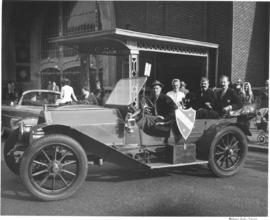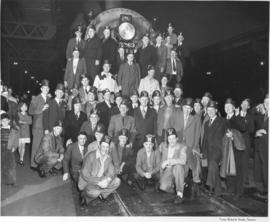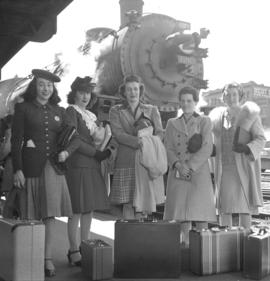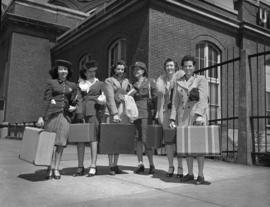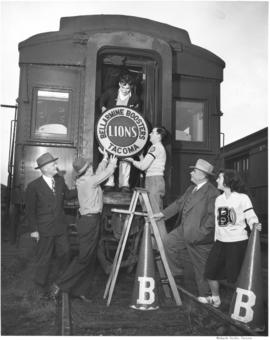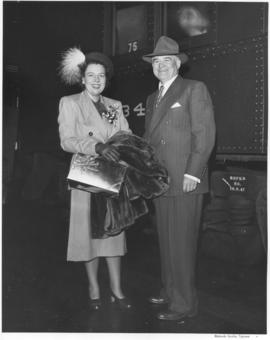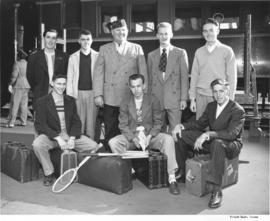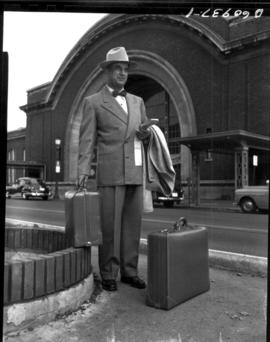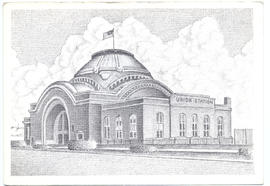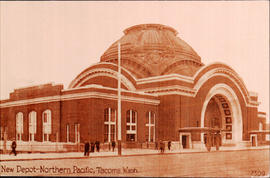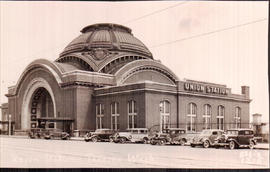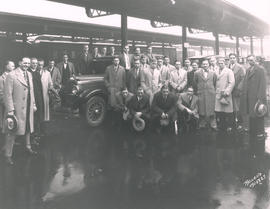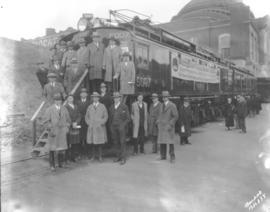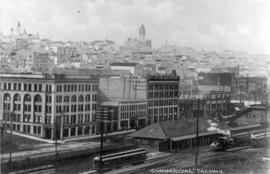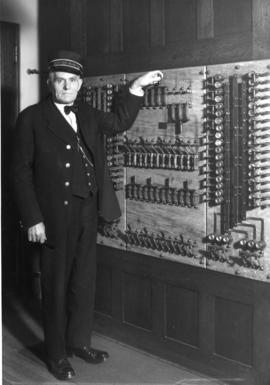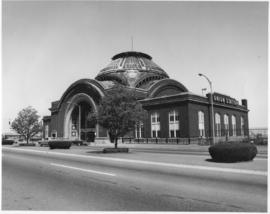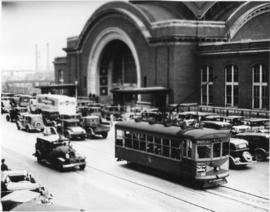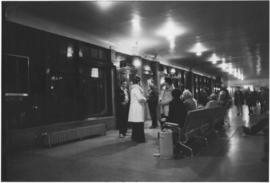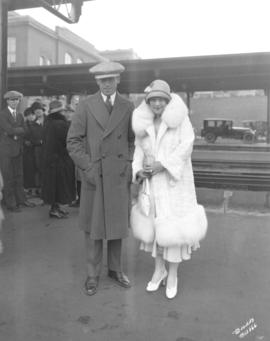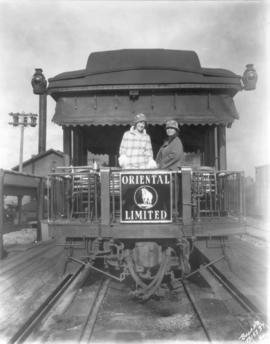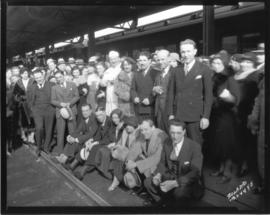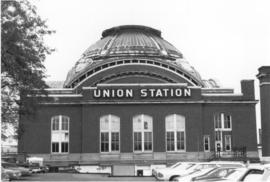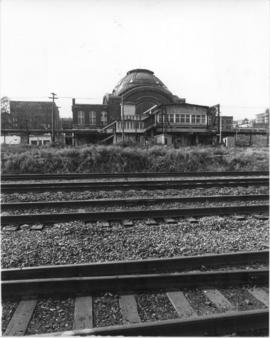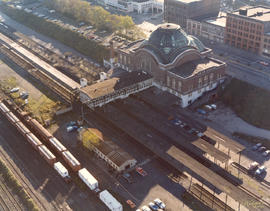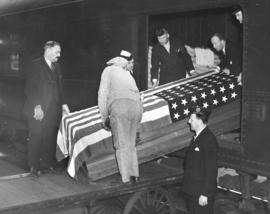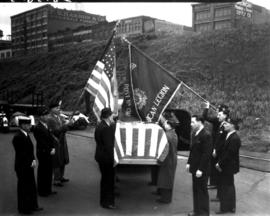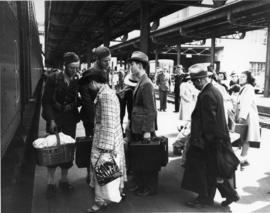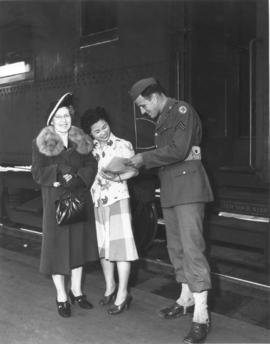- Item
- 1948-11-06
Part of Richards Studio Photographs
CPS Homecoming Parade, Times, Buzz. A parade was held Saturday November 6, 1948, from Union Station to Stadium Bowl preceeding the College of Puget Sound Homecoming Game that afternoon. Many of the CPS fraternities entered a contest for the oldest car. Delta Pi Omicron entered a 1907 Palmer-Singer automobile owned by Ed Griffin, a well-known local businessman. It was the only one of its kind in the parade. The automobile had over-drive and could attain speeds of 75 miles per hour. Ed Bartell is driving and his fraternity brothers, Bob Wagnlid and Dick Sawyer, are in the back seat. Homecoming Queen Cynthia Harris is seated in the back of a convertible in front of Union Station behind them. (T.Times, 11/11/1948, p.3)
Union Station (Tacoma); College of Puget Sound (Tacoma)--1940-1950; Automobiles--Tacoma--1940-1950; Students--Tacoma--1940-1950; Parades & processions--Tacoma--1940-1950; Universities & colleges--Tacoma--1940-1950; Railroad stations--Tacoma;
